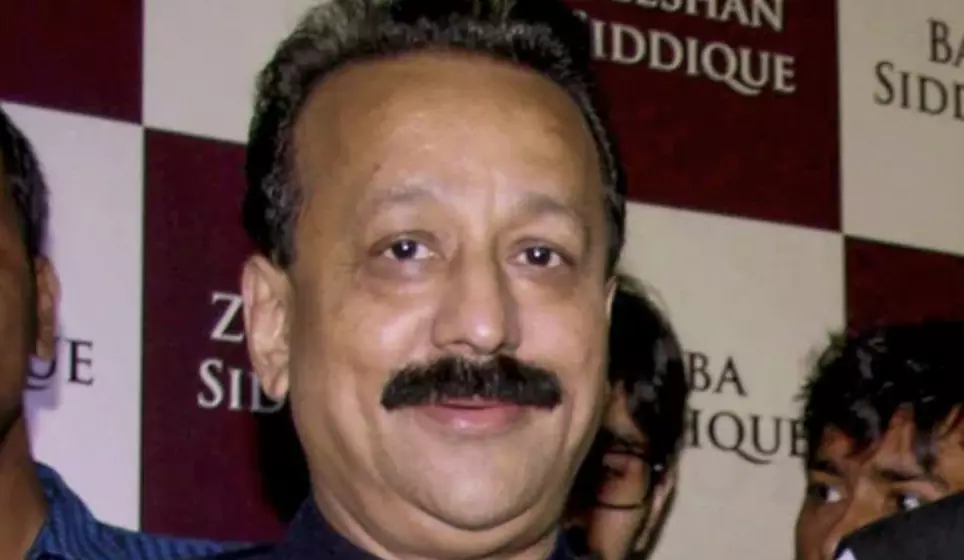Baba Siddique’s Murder: A grim continuation of Mumbai’s political bloodshed
image for illustrative purpose

Since the 1960s, Mumbai has witnessed the murders of nearly half a dozen politicians by gangs, revealing the city’s dark underbelly of political rivalry intertwined with organized crime.
Baba Siddique, a prominent Nationalist Congress Party (NCP) leader and three-time former Bandra West MLA, was gunned down on Saturday, igniting concerns over the safety of politicians in Mumbai. Authorities are investigating potential links to jailed gangster Lawrence Bishnoi, underscoring the persistent threat of underworld violence that has plagued the city for decades.
Siddique’s death is a stark reminder of a grim pattern. Since the 1960s, nearly half a dozen politicians in Mumbai have fallen victim to gang-related attacks, revealing a dark underbelly of political rivalry intertwined with organized crime.
Interestingly, the Bandra West constituency, which Siddiqui represented for three terms from 1999 to 2014, has seen its fair share of politicians fall victim to underworld violence. One such figure was Ramdas Nayak, who was elected from Kherwadi in 1978 on a Janata Party ticket. He later ran unsuccessfully for election on a BJP ticket from Vandre, the name for Bandra West following delimitation.
Nayak, an influential politician and head of the BJP’s Mumbai unit, was believed to have crossed paths with gangster Chhota Shakeel, leading to a hit being ordered on him. On August 28, 1994, Nayak left his residence, located just 700 meters from Siddiqui’s home, in his white Ambassador car, accompanied by state-provided security personnel.
Meanwhile, six men associated with Chhota Shakeel lay in wait. Among them were notorious gangsters Firoz Kokni and an accomplice named Soni, who opened fire with AK-47 rifles, killing Nayak and his security detail before fleeing on a motorcycle.
The Mumbai police arrested 12 people in connection with the case, including Firoz Kokni, who later escaped from police custody. Most of the accused were acquitted at various stages by higher courts, with only one remaining convicted in a protracted legal battle that lasted 13 years.
This was not the first murder of an elected politician in Mumbai; in fact, the first incident of this nature was believed to have stemmed from political rivalry. The murder of Krishna Desai, a legislator from the Communist Party of India (CPI), on a rainy night in Tavari Pada, Lalbaug, on June 5, 1970, was said to have paved the way for the Shiv Sena’s entry into the Maharashtra Legislative Assembly later that year.
Desai was a mill worker who emerged as a popular union leader in the post-independence era. He won the municipal corporation elections and became a corporator in 1952. On a CPI ticket, he later won the MLA elections from Parel in 1967, becoming a significant figure in the Lalbaug Parel area, the heartland of Mumbai’s mill workers. Desai was instrumental in creating and strengthening the Rashtra Seva Dal in Mumbai, which served as a cultural front for the Communist Party, attracting young men to its cause.
As the Shiv Sena sought to consolidate its base in Mumbai, it came into conflict with the CPI over political dominance in the area, viewing the Rashtra Seva Dal and Desai as a threat. On the night of June 5, 1970, Desai, accompanied by an associate, stepped outside his house after being informed that someone wanted to meet him. He was ambushed a short distance away by a group of men, two of whom fatally stabbed him with swords.
Shiv Sena founder Bal Thackeray issued a statement calling Desai’s death unfortunate; however, 19 Sena supporters were arrested for the murder, with 16 eventually convicted.
The number of elected representatives being murdered increased dramatically in the early 1990s, as Mumbai experienced a wave of targeted killings by gangsters. The first notable case during this period was that of Shiv Sena MLA Vitthal Chavan, who was shot dead in mid-1992 by members of the Guru Satam gang, reportedly due to a fallout over monetary issues. No one was convicted for his murder.
A year later, on May 29, 1993, Ramesh More, a Shiv Sena politician and trade union leader, was shot dead by four assailants as he walked toward his residence in Andheri. His killing was attributed to the Arun Gawli gang. Five days later, on June 3, 1993, two-time BJP MLA Prem Kumar Shankardat Sharma was shot dead by two gunmen at Grant Road while dining out with his family; they were reportedly affiliated with the Dawood Ibrahim gang.
In April 1994, Ziauddin Bukhari, a former MLA from the Muslim League and a well-known community leader, was killed in Byculla. While the Arun Gawli gang was implicated, many of those arrested were acquitted.
However, the spate of political killings came to a halt after the Shiv Sena-BJP coalition took power in Maharashtra in 1995. The last major political figure to be assassinated was Datta Samant, a former legislator and union leader. On January 16, 1997, while on his way to work in Ghatkopar, Samant’s vehicle was intercepted, and four assailants opened fire, hitting him with 17 bullets. He was declared dead on arrival at the hospital.
The police attributed his murder to rivalry among trade unions at Premium Automobiles Limited, and in 2000, three people, including two shooters, were convicted. Gangster Chhota Rajan was named an accused but acquitted in 2023, nearly 27 years after the killing.

